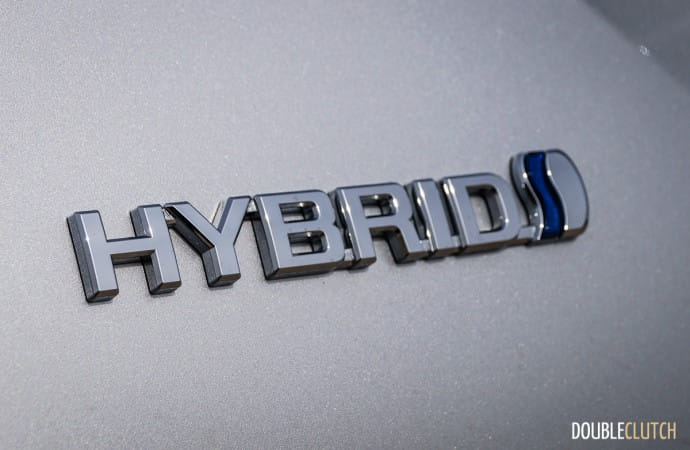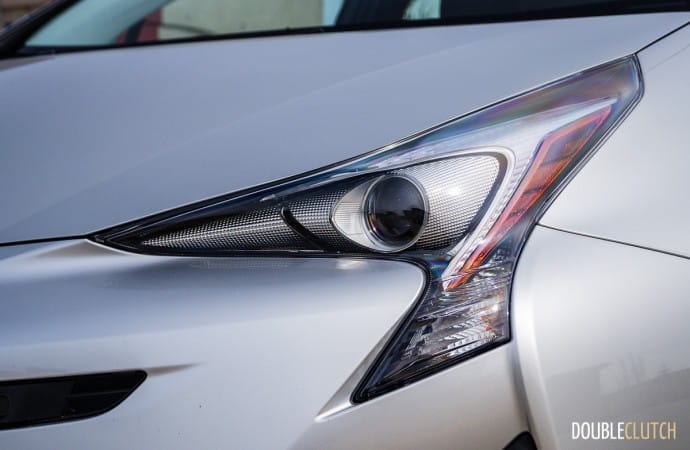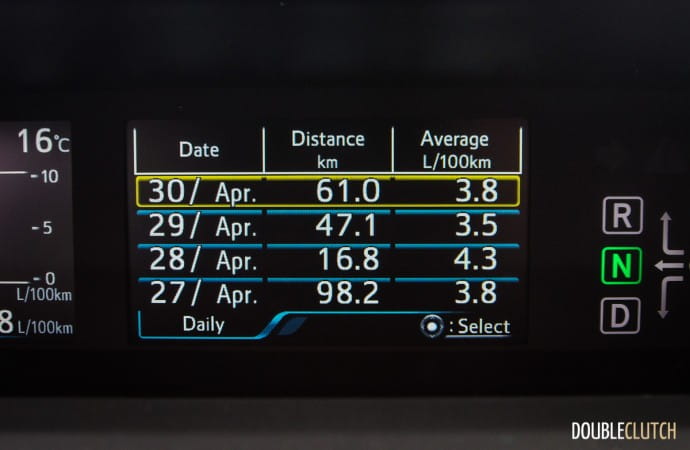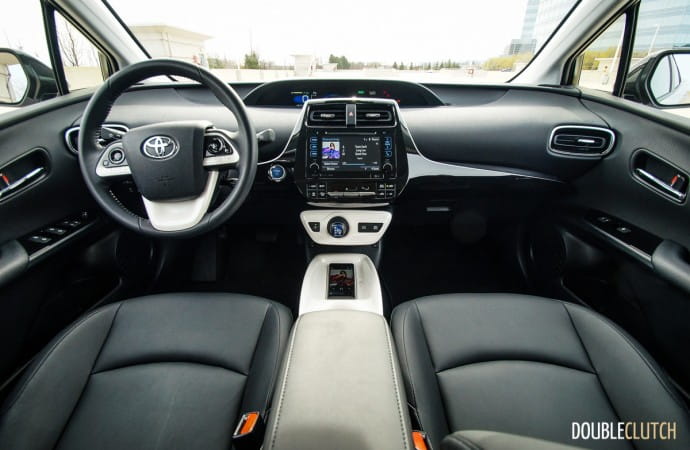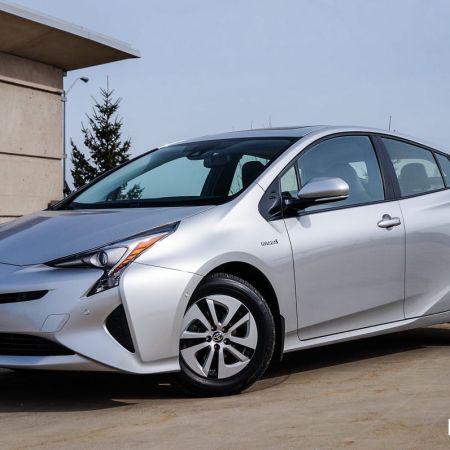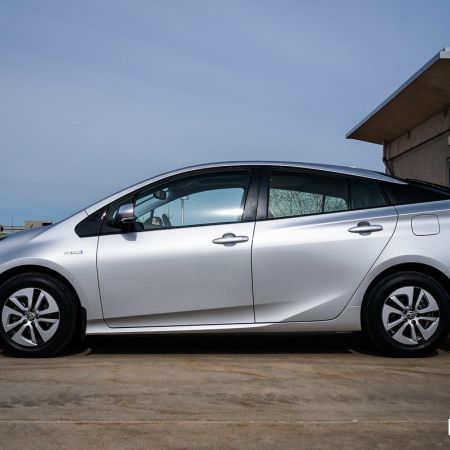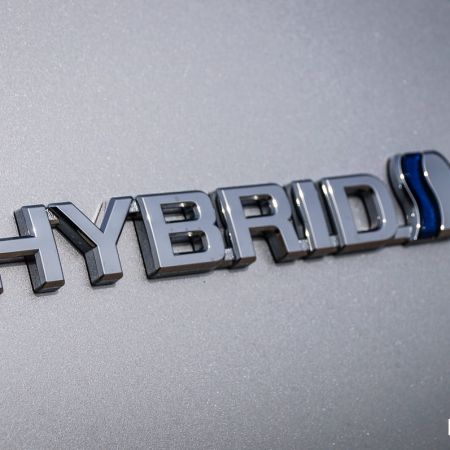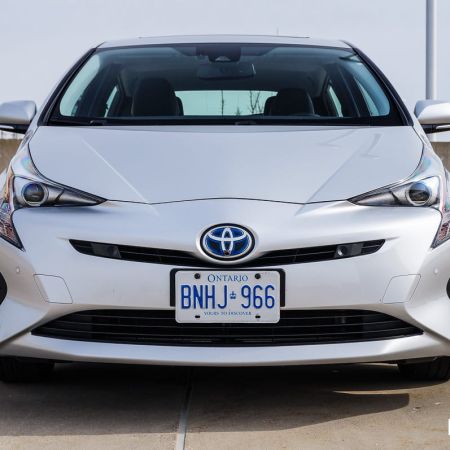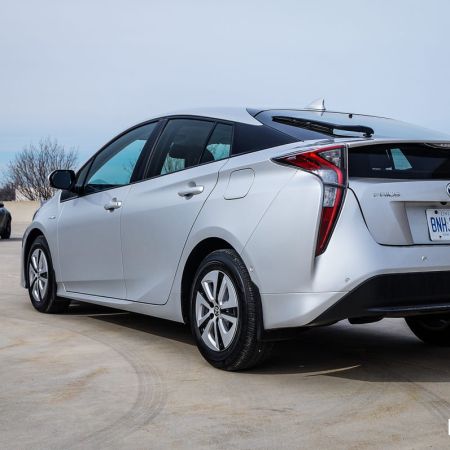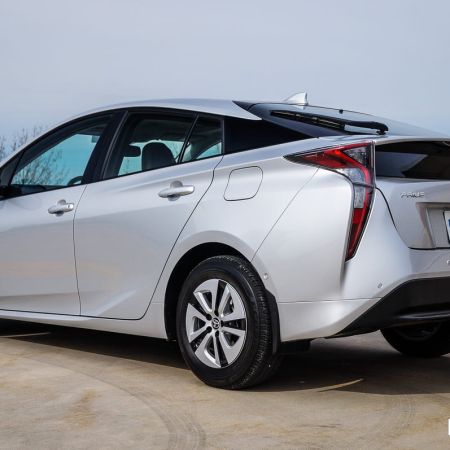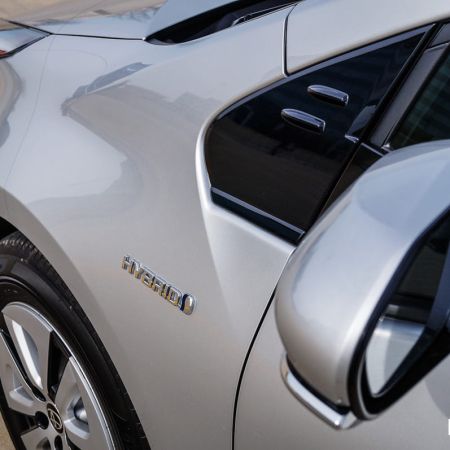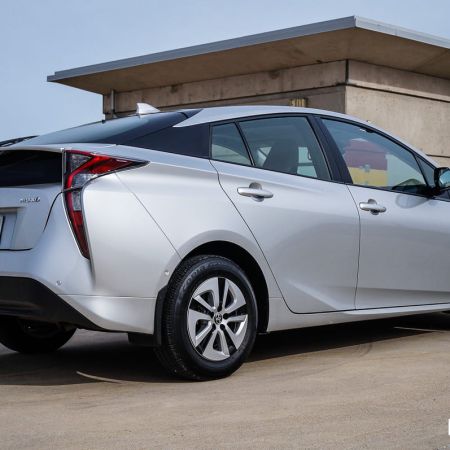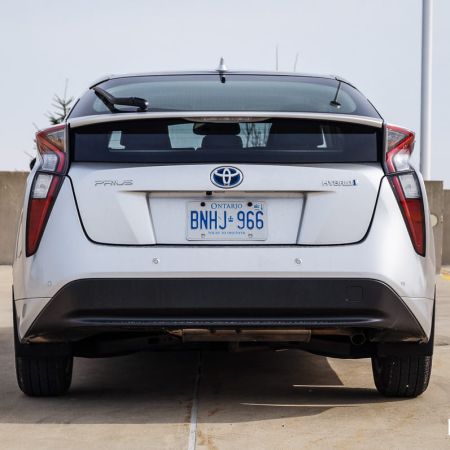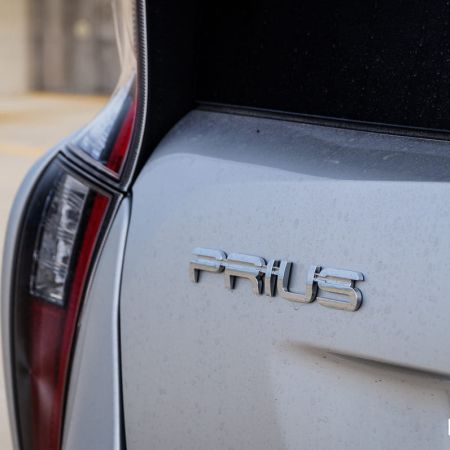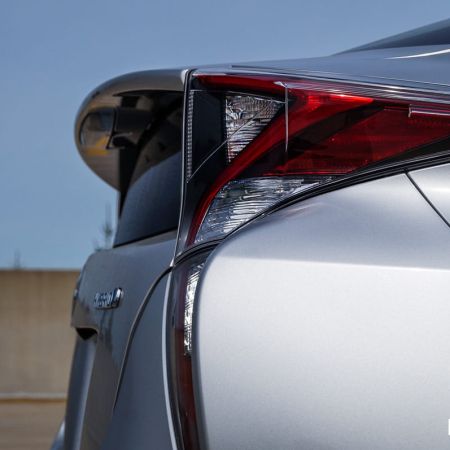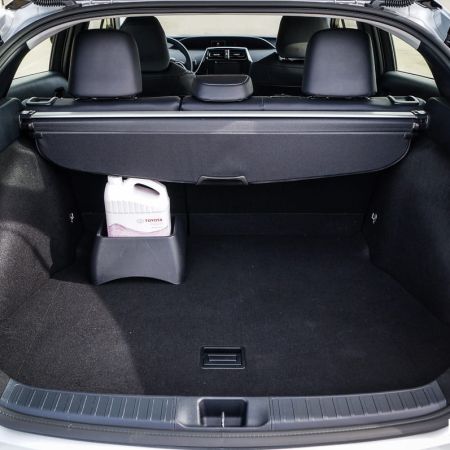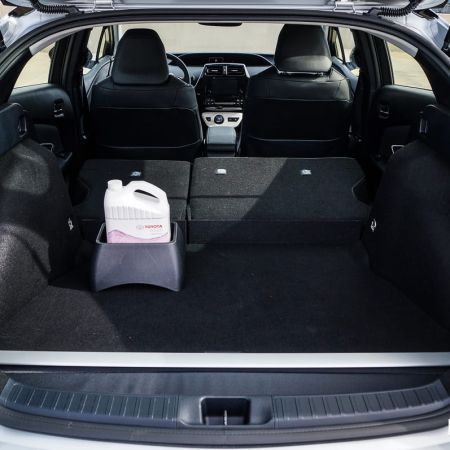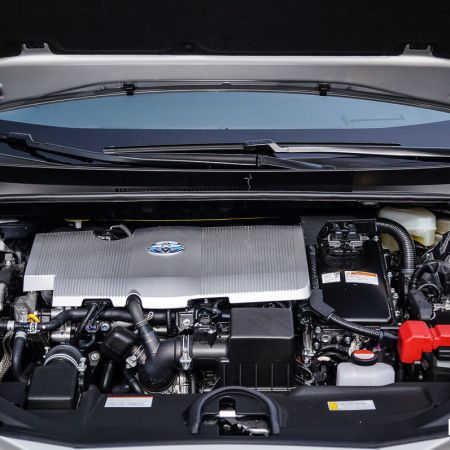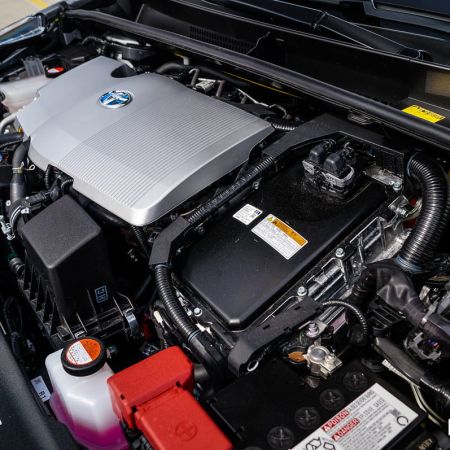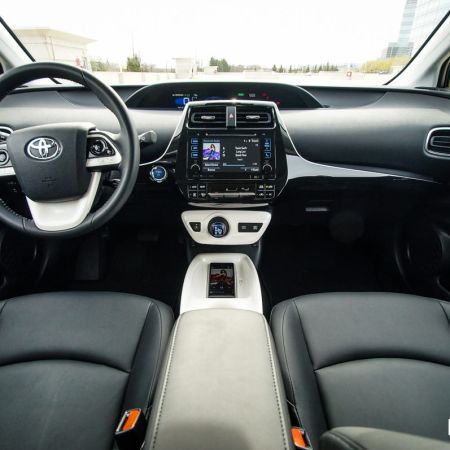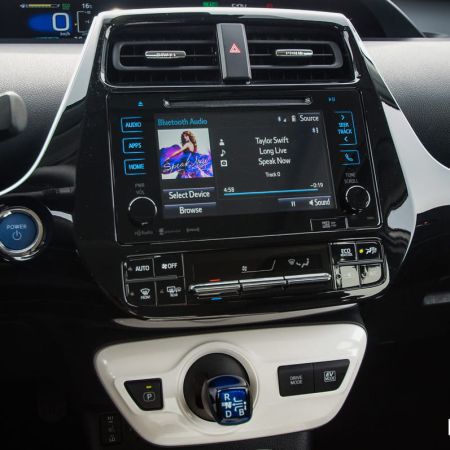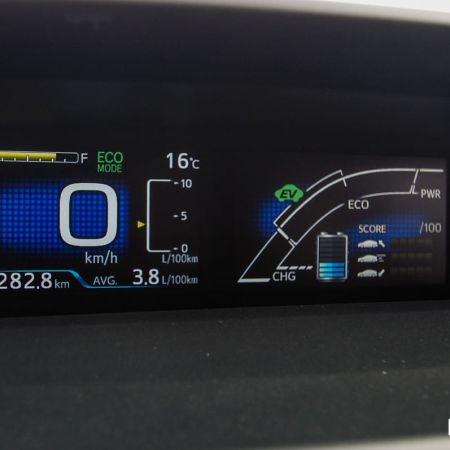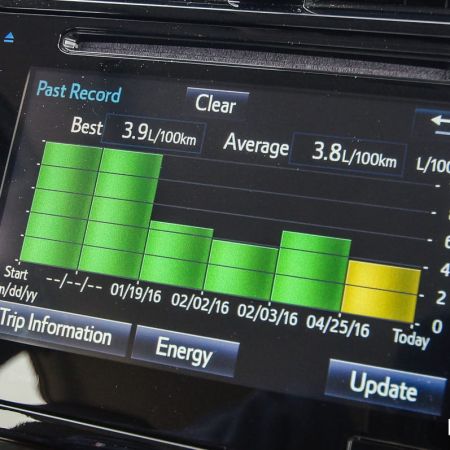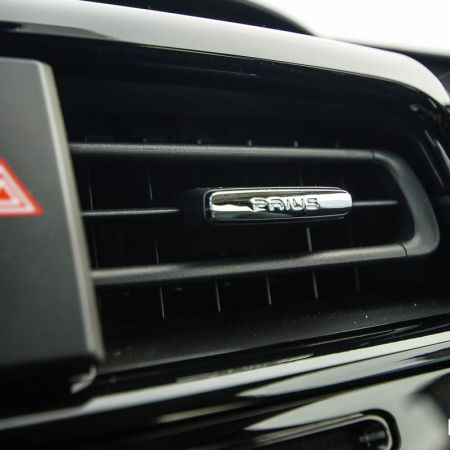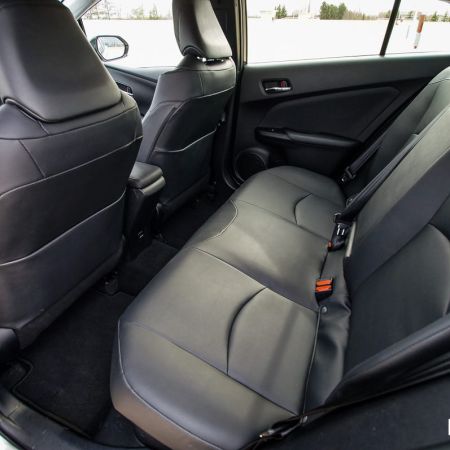In 2001, Toyota introduced the Prius to North American shores as one of the early adopters of hybrid technology. With both electricity and gasoline being used to provide forward motion, the dual power sources touted improved fuel economy while reducing carbon emissions. Fifteen years and four generations later, the 2016 Toyota Prius still represents the state of the art in automotive powertrain engineering. With advanced aerodynamic, material, and powertrain updates, the now-ubiquitous hybrid aims to grab an even larger segment of market share. To see how far they’ve come along, the DoubleClutch.ca team tested out a Classic Silver Metallic 2016 Toyota Prius Technology, which is the lineup’s middle trim level.
Over the years, the Prius has developed a very loyal following, with buyers coming to appreciate the excellent reliability, resale value, and fuel economy that it has to offer. Toyota’s latest iteration carries over the basics of the previous car’s 1.8-litre “2ZR-FXE” inline-four design, but there’s been significant retuning that’s resulted in a reported 40-percent thermal efficiency. This stellar figure is achieved through the likes of the Atkinson cycle (implemented by variable valve timing), as well as reduced friction of the crankshaft and piston assemblies.
Long story short, this means that out of all of the heat generated during the combustion of gasoline, 40-percent can be used as useful energy to turn the crankshaft; the remaining 60-percent gets wasted as heat to the outside world. While that initially sounds like a pitiful figure, consider the fact that even on a good day, today’s gasoline internal combustion engines are usually only good for 20-to-25-percent thermal efficiency.
Backing up the neat technology behind the gasoline engine is an electric motor drive system that’s seen some significant improvements in itself. In all trims other than the base Prius, a Lithium-ion (Li-ion) battery pack becomes standard equipment. While power output is not changed, the Lithium batteries are more energy dense, which allows them to be lighter. These weight shavings are offset by higher feature and equipment levels in the middle Technology and top Touring trim levels, allowing the higher end models to come in at a nearly identical curb weight as the Nickel-Metal Hydride (Ni-MH) base car.
Total electric and gas system power output is 121 horsepower, which is thirteen less than the 2015 model. Fear not, however, as this is due to differences in engineering standards used to calculate the combined value. Hybrid Synergy Drive seamlessly integrates the two power sources, with electric power being used first, and gasoline assisting as acceleration demand is increased. At the end of the day, the real world performance remains very similar, and drivers would be hard pressed to tell whether the new car is faster or slower than the outgoing one. Regenerative braking (the electric motor in reverse, which becomes a generator) serves the purpose of both braking and battery recharge. When battery levels get too low, the gas engine will also kick in to help with charging.
All things considered, Toyota rates the 2016 Prius at 4.4/4.6/4.5 L/100km city/highway/combined, respectively. This trumps 2015’s 4.6/4.9/4.7 value, which was still excellent when considered by itself. Observed economy managed to handily trump the nominal values, with an astounding 3.8 L/100km in mixed driving. This result was achieved without excessive hypermiling (read: extreme, borderline unsafe driving tactics used to conserve fuel), but keen attention was paid to the status of the electric motor and gasoline engine while still keeping up with traffic flow. Cool weather during evaluation also allowed the heater and air conditioning to be switched off, which will decrease gas engine use.
The pulse-and-glide technique was used to encourage the shutdown of the gas engine on level or downhill surfaces – it’s as simple as backing off on the accelerator after getting up to speed, which allows the gas engine to shut off. In most cases, the electric motor will have enough power to maintain cruising speed. In stop and go traffic, regenerative braking and low-speed electric mode use saw trip fuel economy as low as 2.7 L/100km. The 2016 Prius can run in full electric mode at highway speeds as high as 110 km/h; previously, only 72 km/h could be achieved before the gas engine needed to kick in full time.
Now, to address the elephant in the room: the styling of the new Prius is most certainly polarizing, with a love-it-or-hate-it look that’s sure to draw plenty of comments, cheers, and jeers. What’s important, however, is that the reason behind the styling needs to be understood. Toyota managed to squeak in a drag coefficient of 0.24, which means that the Prius is a very slippery car when it comes to cutting through the wind at speed. With decreased wind resistance comes improved fuel economy, and it’s plain to see that Toyota was leaning towards overall aerodynamic performance when they were sculpting the body lines. Active grille shutters also open and close in order to improve airflow around the car. For the science geeks out there, it’s an engineering marvel; for everyone else, your mileage may vary.
As the first car built on the Toyota New Global Architecture (TNGA) platform, the new Prius brings with it a wealth of modern chassis development. Rigidity is improved without weight penalty, which results in improved ride, handling, and fuel economy. Gone is the torsion beam rear suspension of the old car, with the replacement being a new double wishbone independent setup. This change has improved the driving dynamics of the Prius, and while it’ll never win any awards amongst sports cars, it does help to make the Prius a little more engaging when traversing sharp curves and off-ramps around town. Vibration isolation is noticeably better, and features such as laminated side glass (think double pane) help to keep the noise down as well.
Moving inside, the Prius Technology has a very well equipped, comfortable, and spacious interior that also does well in terms of utility. Fit and finish is top notch, seat comfort is above average, and a ton of cargo can be swallowed up, especially with the rear seats folded. Toyota made a bit of an odd choice in the use of white plastic on the centre console, which is difficult to keep looking clean thanks to dust accumulation that becomes painfully obvious. The multimedia and connectivity suite on the Prius Technology features a 7-inch touch screen, and was fairly intuitive to use. An Eco app allowed drivers to keep track of their fuel economy by trip, day, or even minute-to-minute. Bluetooth phone pairing worked well for phone conversations and music streaming, and the Qi wireless charging mat is a great feature if your smartphone is equipped with it.
With the optional Prius Technology Advanced Package, there’s a colour head-up display, heated front seats (with the driver getting 8-way power adjustability), and the seating surfaces are excellent-feeling and durable SofTex synthetic leather. A blind spot monitoring and lane keeping assist system complements the standard adaptive cruise control on Technology models. The Advanced Package on the test vehicle went for $3,260, with the total as-tested price coming to $31,990.
At this equipment level and fuel economy performance, the 2016 Toyota Prius makes for a fantastic family vehicle and daily driver. As one of the best-engineered vehicles on the road today, it’s smooth, quiet, cheap to run, cheap to own, and isn’t too expensive to buy. Although other automakers offer hybrid powertrains, Toyota has once again demonstrated that they are the gold standard when it comes to hybrids. If the aerodynamically advanced styling works for you, consider it a resounding hit.
2016 Toyota Prius Gallery
See Also:

